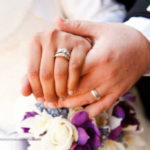
The process facilitated growth and change in the law: by adapting existing formulas, or modifying them, the praetors were, in effect, in a position to adjust substantive rules of law. Pleadings contain Statements of Claim, Statements of Defence, Civil Claims, Dispute Notes, Counterclaims, Originating Notices. Civil law judges constitute a separately trained skilled elite, whose entire careers involve judicial service.
As a outcome of the 1954 Hague Convention on Civil Procedure and a lot of other treaties, this requirement has been eliminated in between quite a few nations. The Guidelines of Court are regulations which set out the rules, types, and procedures which apply in civil actions in the Court of Queen’s Bench and the Surrogate Court. In 1667 in France this led to the enactment by Louis XIV of the Ordonnance Civile, also identified as Code Louis, a comprehensive code regulating civil procedure in all of France in a uniform manner. By contrast, in Scandinavia indigenous procedure adapted itself and was in a position to resist displacement by foreign law.
Moreover, proof may often be received during the preliminary phases rather than at the major hearing, although in some systems the full court holds hearings devoted to all aspects of the case, devoid of distinguishing among matters regarded as preliminary and these additional pertinent to the main hearing. When the party having the burden of proof of an concern has completed its presentation, the opposing side may well ask the court to rule as a matter of law that the proof presented does not supply adequate proof for the party who presented the evidence.
With its heavy reliance on written, rather than oral, presentations, the Roman-canonical procedure contrasted markedly with that of Germanic tribal law. In contrast to in the frequent-law method, such a hearing require not involve any testimony by witnesses and may be held over numerous sessions separated by substantial intervals. The climactic event in a lawsuit primarily based on European codes is the hearing ahead of the full court, which might occur in several broadly separated segments.









